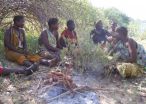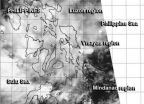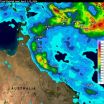(Press-News.org) This news release is available in German.
The gut microbiota is responsible for many aspects of human health and nutrition, but most studies have focused on "western" populations. An international collaboration of researchers, including researchers of the Max Planck Institute for Evolutionary Anthropology in Leipzig, Germany, has for the first time analysed the gut microbiota of a modern hunter-gatherer community, the Hadza of Tanzania. The results of this work show that Hadza harbour a unique microbial profile with features yet unseen in any other human group, supporting the notion that Hadza gut bacteria play an essential role in adaptation to a foraging subsistence pattern. The study further shows how the intestinal flora may have helped our ancestors adapt and survive during the Paleolithic.
Bacterial populations have co-evolved with humans over millions of years, and have the potential to help us adapt to new environments and foods. Studies of the Hadza offer an especially rare opportunity for scientists to learn how humans survive by hunting and gathering, in the same environment and using similar foods as our ancestors did.
The research team, composed of anthropologists, microbial ecologists, molecular biologists, and analytical chemists, and led in part by Stephanie Schnorr and Amanda Henry of the Max Planck Institute for Evolutionary Anthropology, compared the Hadza gut microbiota to that of urban living Italians, representative of a "westernized" population. Their results, published recently in Nature Communications, show that the Hadza have a more diverse gut microbe ecosystem, i.e. more bacterial species compared to the Italians. "This is extremely relevant for human health", says Stephanie Schnorr. "Several diseases emerging in industrialized countries, like IBS, colorectal cancer, obesity, type II diabetes, Crohn's disease and others, are significantly associated with a reduction in gut microbial diversity."
The Hadza gut microbiota is well suited for processing indigestible fibres from a plant-rich diet and likely helps the Hadza get more energy from the fibrous foods that they consume. Surprisingly, Hadza men and women differed significantly in the type and amount of their gut microbiota, something never before seen in any other human population. Hadza men hunt game and collect honey, while Hadza women collect tubers and other plant foods. Though they share these foods, each sex eats slightly more of the foods they target. "The differences in gut microbiota between the sexes reflects this sexual division of labour", says Stephanie Schnorr. "It appears that women have more bacteria to help process fibrous plant foods, which has direct implications for their fertility and reproductive success." These findings support the key role of the gut microbiota as adaptive partners during the course of human evolution by aligning with differing diets.
Finally, the Hadza gut microbe community is a unique configuration with high levels of bacteria, like Treponema, that in western populations are often considered signs of disease, and low levels of other bacteria, like Bifidobacterium, that in western populations are considered "healthy". However, the Hadza experience little to no autoimmune diseases that would result from gut bacteria imbalances. Therefore, we must redefine our notions of "healthy" and "unhealthy" bacteria, since these distinctions are clearly dependent on the environment we live in. Genetic diversity of bacteria is likely the most important criterion for the health and stability of the gut microbiome.
"Co-resident microbes are our 'old friends' that help us adapt to different lifestyles and environments", says Amanda Henry, leader of the Max Planck Research Group on Plant Foods in Hominin Dietary Ecology. "Through this analysis of the Hadza gut microbiota, we have increased our knowledge of human-microbiome adaptations to life in a savanna environment and improved our understanding of how gut microbiota may have helped our ancestors adapt and survive during the Paleolithic."
INFORMATION:
Original publication
Stephanie L. Schnorr, Marco Candela, Simone Rampelli, Manuela Centanni, Clarissa Consolandi, Giulia Basaglia, Silvia Turroni, Elena Biagi, Clelia Peano, Marco Severgnini, Jessica Fiori, Roberto Gotti, Gianluca De Bellis, Donata Luiselli, Patrizia Brigidi, Audax Mabulla, Frank Marlowe, Amanda G. Henry & Alyssa N. Crittenden
Gut microbiome of the Hadza hunter-gatherers
Nature Communications, 15 April 2014, Doi: 10.1038/ncomms4654
Lifestyle determines gut microbes
An international team of researchers has for the first time deciphered the intestinal bacteria of present-day hunter-gatherers
2014-04-15
ELSE PRESS RELEASES FROM THIS DATE:
Real-time audio of corporal punishment shows kids misbehave within 10 minutes of spanking
2014-04-15
A new study based on real-time audio recordings of parents practicing corporal punishment discovered that spanking was far more common than parents admit, that children were hit for trivial misdeeds and that children then misbehaved within 10 minutes of being punished.
Advocates of corporal punishment have outlined best practices for responsible spanking. But real-time audio from this study revealed that parents fail to follow the guidelines, said psychologist George Holden, who is lead author on the study and a parenting and child development expert at Southern Methodist ...
Breaking bad mitochondria
2014-04-15
Researchers at the University of California, San Diego School of Medicine have identified a mechanism that explains why people with the hepatitis C virus get liver disease and why the virus is able to persist in the body for so long.
The hard-to-kill pathogen, which infects an estimated 200 million people worldwide, attacks the liver cells' energy centers – the mitochondria – dismantling the cell's innate ability to fight infection. It does this by altering cells mitochondrial dynamics.
The study, published in today's issue of the Proceedings of the National Academy ...
Computerized counseling reduces HIV-1 viral load, sexual transmission risk
2014-04-15
Antiretroviral therapy (ART), the primary type of treatment for the human immunodeficiency virus (HIV), can reduce sexual transmission, prevent illness, and increase longevity and quality of life for patients. However, according to current data, only an estimated 77-percent of U.S patients on ART therapy have suppressed viral loads. This suggests patients' adherence to the current ART treatment regiments is in need of improvement to reduce the viral load and also to lower sexual transmission risk behaviors.
Now, new research from faculty affiliated with New York University's ...
Rethink education to fuel bioeconomy, says report
2014-04-15
Microbes can be highly efficient, versatile and sophisticated manufacturing tools, and have the potential to form the basis of a vibrant economic sector. In order to take full advantage of the opportunity microbial-based industry can offer, though, educators need to rethink how future microbiologists are trained, according to a report by the American Academy of Microbiology.
"Industrial microbiology is experiencing a Renaissance; microorganisms make products ranging from the tightly regulated pharmaceuticals industry to large-scale production of commodity chemicals and ...
UC research illuminates 'touchy' subject
2014-04-15
By solving a long standing scientific mystery, the common saying "you just hit a nerve" might need to be updated to "you just hit a Merkel cell," jokes Jianguo Gu, PhD, a pain researcher at the University of Cincinnati (UC).
That's because Gu and his research colleagues have proved that Merkel cells— which contact many sensory nerve endings in the skin—are the initial sites for sensing touch.
"Scientists have spent over a century trying to understand the function of this specialized skin cell and now we are the first to know … we've proved the Merkel cell to be a primary ...
Predicting bioavailable cadmium levels in soils
2014-04-15
New Zealand's pastoral landscapes are some of the loveliest in the world, but they also contain a hidden threat. Many of the country's pasture soils have become enriched in cadmium. Grasses take up this toxic heavy metal, which is then eaten by the cattle and sheep that graze them. The problem is not unique to New Zealand; cadmium-enriched soils being reported worldwide.
The concern is that if cadmium concentrations rise to unsafe levels in meat and dairy products, human health and New Zealand's agricultural economy could be jeopardized. That so far hasn't happened.
But, ...
Remnants of Tropical Depression Peipah still raining on Philippines
2014-04-15
Several regions in the south and central Philippines have flood advisories as the remnants of now dissipated Tropical Depression Peipah continue to linger over the country. NASA-NOAA's Suomi NPP satellite got a look at the remnant clouds from its orbit in space on April 15.
The Visible Infrared Imaging Radiometer Suite (VIIRS) instrument aboard NASA-NOAA's Suomi NPP satellite captured a look at Peipah's remnant clouds on April 15 at 5:44 a.m. EDT. VIIRS collects visible and infrared imagery and global observations of land, atmosphere, cryosphere and oceans. The VIIRS ...
Study examines Vitamin D deficiency and cognition relationship
2014-04-15
WINSTON-SALEM – April 15, 2014 – Vitamin D deficiency and cognitive impairment are common in older adults, but there isn't a lot of conclusive research into whether there's a relationship between the two.
A new study from Wake Forest Baptist Medical Center published online ahead of print this month in the Journal of the American Geriatrics Society enhances the existing literature on the subject.
"This study provides increasing evidence that suggests there is an association between low vitamin D levels and cognitive decline over time," said lead author Valerie Wilson, ...
NASA's TRMM Satellite adds up Tropical Cyclone Ita's Australian soaking
2014-04-15
After coming ashore on April 11, Tropical Cyclone Ita dropped heavy rainfall over the weekend that caused flooding in many areas of northeastern Australia's state of Queensland. The Tropical Rainfall Measuring Mission satellite known as TRMM gathered data on rainfall that was used to create a rainfall map at NASA.
TRMM is a satellite managed by both NASA and JAXA, the Japan Aerospace Exploration Agency. At NASA's Goddard Space Flight Center in Greenbelt, Md. Hal Pierce created a TRMM-based near-real time Multi-satellite Precipitation Analysis (TMPA). The TMPA precipitation ...
The key to easy asthma diagnosis is in the blood
2014-04-15
MADISON, Wis. — Using just a single drop of blood, a team of University of Wisconsin-Madison researchers has developed a faster, cheaper and more accurate tool for diagnosing even mild cases of asthma.
This handheld technology — which takes advantage of a previously unknown correlation between asthmatic patients and the most abundant type of white blood cells in the body — means doctors could diagnose asthma even if their patients are not experiencing symptoms during their visit to the clinic.
The team described its findings in the journal Proceedings of the National ...
LAST 30 PRESS RELEASES:
Numbers in our sights affect how we perceive space
SIMJ announces global collaborative book project in commemoration of its 75th anniversary
Air pollution exposure and birth weight
Obstructive sleep apnea risk and mental health conditions among older adults
How talking slows eye movements behind the wheel
The Ceramic Society of Japan’s Oxoate Ceramics Research Association launches new international book project
Heart-brain connection: international study reveals the role of the vagus nerve in keeping the heart young
Researchers identify Rb1 as a predictive biomarker for a new therapeutic strategy in some breast cancers
Survey reveals ethical gaps slowing AI adoption in pediatric surgery
Stimulant ADHD medications work differently than thought
AI overestimates how smart people are, according to HSE economists
HSE researchers create genome-wide map of quadruplexes
Scientists boost cell "powerhouses" to burn more calories
Automatic label checking: The missing step in making reliable medical AI
Low daily alcohol intake linked to 50% heightened mouth cancer risk in India
American Meteorological Society announces Rick Spinrad as 2026 President-Elect
Biomass-based carbon capture spotlighted in newly released global climate webinar recording
Illuminating invisible nano pollutants: advanced bioimaging tracks the full journey of emerging nanoscale contaminants in living systems
How does age affect recovery from spinal cord injury?
Novel AI tool offers prognosis for patients with head and neck cancer
Fathers’ microplastic exposure tied to their children’s metabolic problems
Research validates laboratory model for studying high-grade serous ovarian cancer
SIR 2026 delivers transformative breakthroughs in minimally invasive medicine to improve patient care
Stem Cell Reports most downloaded papers of 2025 highlight the breadth and impact of stem cell research
Oxford-led study estimates NHS spends around 3% of its primary and secondary care budget on the health impacts of heat and cold in England
A researcher’s long quest leads to a smart composite breakthrough
Urban wild bees act as “microbial sensors” of city health.
New study finds where you live affects recovery after a hip fracture
Forecasting the impact of fully automated vehicle adoption on US road traffic injuries
Alcohol-related hospitalizations from 2016 to 2022
[Press-News.org] Lifestyle determines gut microbesAn international team of researchers has for the first time deciphered the intestinal bacteria of present-day hunter-gatherers




